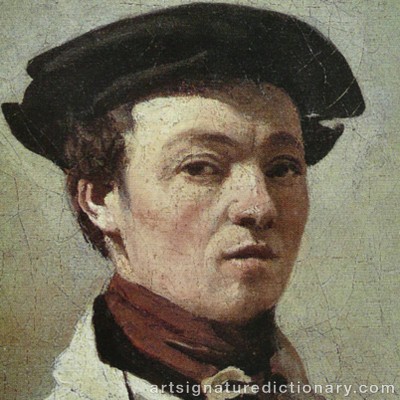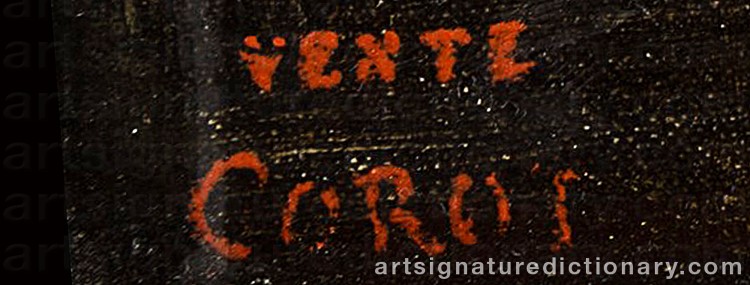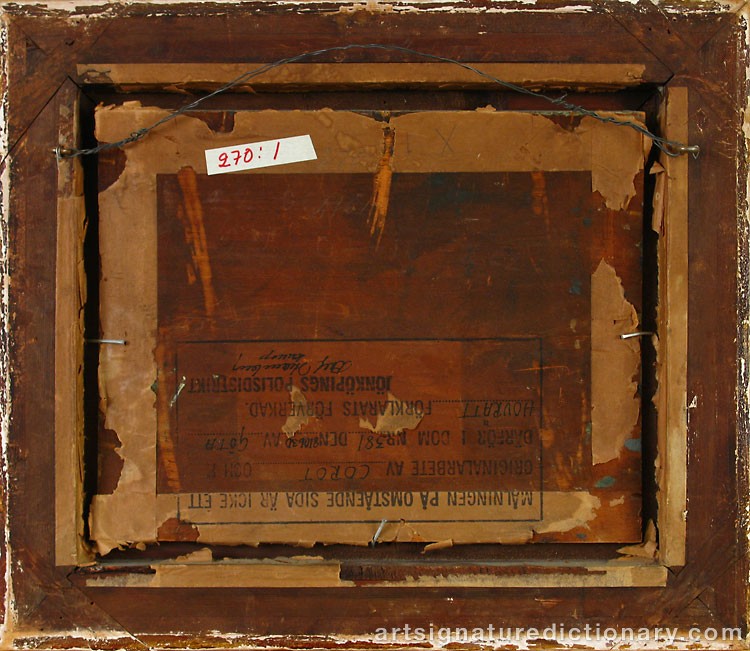
Jean Baptiste Camille COROT
1796–1875, France

Signature proven counterfeit
Oil on canvas, landscape with bridge, 39x29 cm, signed 'Corot'. Investigation of UV light revealed that the painting varnish ever been uncovered at the site of the current signature. Since then, the painting re varnished. The signature has most likely been painted there before the second varnishing. In the lower left corner has an after signing occurred in red. Similar motif with bridge, water and trees found in Corot, but the color treatment and artistic quality of this painting is not Corot. The painting has the character of outdoor realistic study from the 1880s. A style that art historically, is later than Corot. The shadows are insensitive painted and the paint is too green. Court: The painting has been provided with a forged signature, with the intention of misleading the market in the belief that it is made of Corit. The painting is not done by Corot. It is a forgery.

Signature proven counterfeit
Oil on canvas, lake, landscape, 45x90 cm, signed Corot. The painting is signed later in the lower right corner, otherwise there are no changes. It is probably painted in the late 1800s. The motive may be true with Corot choice of subject but is not particularly like Corot. The painting has not Corot's quality or the treatment of the subject. It is unctuous painted with a heavy layer of oil. Corot painted lighter. The District Court's assessment: The painting has not been painted or signed by Corot, it is a forgery.

Signature proven counterfeit
Oil on wood panel, landscape with figure. signed "Corot", 21x27 cm. Technical examination by radiography shows that there are residues of an over-painted signature in the lower left corner which can be interpreted to "...berg?". On top of this, the the forger applied a new signature that is very superficial. Neither this painting is Corot's works. The motif is similar to Corot but the technique is too rough for him and it's too much green color in the painting. The District Court's assessment: The painting is a forgery.

Signature proven counterfeit

Signature considered genuine

Signature considered genuine

Signature considered genuine

Signature considered genuine

Signature considered genuine



























